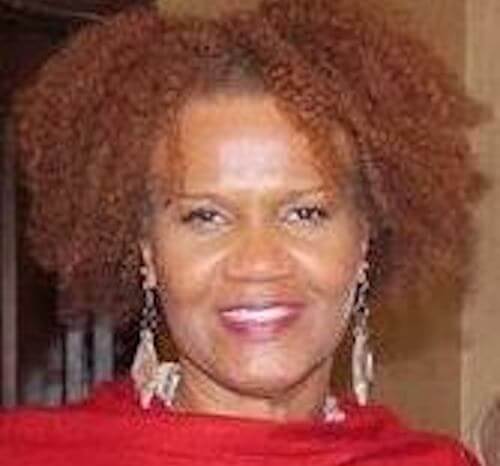Whether you wear it casually or as a super chic hairdo worthy of a red carpet appearance, a great ponytail can be a total showstopper!
On the other end of that spectrum, however, is a different kind of showstopper — one in which there is a significant amount of hair loss, specifically, traction alopecia, which can literally cause a balding ponytail and your hair to fall out in clumps.
Read on to find out more about the connection between wearing a ponytail and experiencing hair loss. Plus, what you can do to combat thinning hair ASAP.
#include-related-slider#
Can Hair Loss Happen From a Ponytail?
“There is a connection between ponytails and hair loss,” said Nakia Burks, owner of N Spot Barber and Beauty Shop. “If you pull your hair in the same direction for an extended period of time, it’s going to cause some damage. When you repeatedly pull on your hair, it can cause traction alopecia. This can happen with men and women. Pulling on your hair can cause hair thinning and hair loss because people are pulling their hair too tight to get a certain look. Really tight ponytails can cause harm and cause stress on your hair follicles.”
Shop: GRO Collection for Thinning Hair
How Can Ponytails Cause Hair Damage?
As cute and practical as they are, ponytails have the ability to cause a host of problems, including hair thinning, hair loss, traction alopecia, and, unfortunately, balding!
There are many different causes of hair loss or thinning. Besides tight ponytails, tight braids, cornrows, extensions, and other hairstyles can cause stress on the hair follicles and result in follicle inflammation and irritation, which is the precursor to hair loss.
Not all hair loss is attributed to tight hairdos, however. Some hair loss is attributed to an interaction between genetics and hormones. Stress and poor sleep or sub-par nutrition can also accelerate the thinning process, as your lifestyle has an impact on your hormones. Permanent hair loss can also come about because of an illness, eating disorder or as a side effect of medication and is common post-pregnancy. Consult with a doctor if you have concerns about any hair loss you experience.
Related: What Causes Hair Loss? Every Trigger Explained
Don't Overdo Your Hairdo
Overdoing your mane on the regular with the same “snatched” pony style every day is a problem. Your hair needs rest from a tightly pulled hairstyle routine. Wearing your hair in a pony every day can stress your strands and cause broken hairs where the elastic meets the hair, especially if you wear your ponytails very tight. This tight hairstyle can also cause traction alopecia.
What Is Traction Alopecia?
Traction alopecia, aka TA, is hair loss caused by the extended and recurring pulling of the hair. You can develop traction alopecia if you often wear your hair in a tight ponytail, bun or braids, especially if you use chemicals or heat on your hair.
In addition to hair loss, the clinical features of traction alopecia include the following:
- Itchiness or redness of the scalp
- Inflammation
- Blistering
- Folliculitis
- Infection of the scalp
- Soreness
- Bumps on the scalp
- Headache
According to the National Library of Medicine, the prevalence of TA is highest among women, including children, of African descent, due to both mechanical characteristics of the curved African hair follicle and cultural hairdressing practices. TA is also much more common among women than men.
Is Traction Alopecia Reversible?
The good news is, yes! Significant hair loss is a process that can take years. Depending on the stage of traction alopecia, it can be reversible. If the problem is identified early, then the hair can completely regrow if hairstyles like tight braids and tight buns are stopped. However, longstanding traction alopecia can cause permanent destruction of the hair follicle and the hair won't grow back.
When dealing with traction alopecia, it's vital to consult with a professional. “A hairstylist can assess the damage and find out what is going on with your hair and your scalp and offer some treatment options,” said Burks. “No one wants to lose their hair. If you see some thinning, don’t wait. That’s the time to make an appointment to see a dermatologist or some other hair professional.”
Also: How to Deal With Natural Hair Breakage
How Traction Alopecia is Treated
Treatments for TA will vary depending on your unique situation. Loosening your hairstyle will help. You should also avoid exposing affected hair and scalp to chemicals and heat. Additionally, a doctor may prescribe topical steroids or other anti-inflammatories to bring down any swelling on your scalp.
Natural Options for Hair Care
In addition to seeing a doctor for traction alopecia, it can help to use products that will treat your scalp with TLC and encourage thicker, fuller looking hair.
One option is our GRO Hair Serum, which includes powerful phyto-actives, such as mung bean, curcumin and red clover, to encourage thicker, fuller looking hair while reducing shedding in as little as three months! You can also opt for GRO + Advanced Hair Serum. Apply either serum daily to towel-dried or dry hair for best results.
The products you use to wash your hair are also important. Obtaining the right moisture/protein balance is vital for your hair to improve its strength and elasticity.
Try our GRO Revitalizing Shampoo & Conditioner Kit. These nourishing formulas are enhanced with clinically proven plant actives. They also utilize the power of our proprietary microencapsulated vegan b-SILK™ protein, Karmatin™, which binds to hair follicles and remains even after you rinse, resulting in a chemical-free keratin hair treatment. Plus, the formulas include wild harvested marula oil, organic murumuru butter and ximenia oil, which help condition and hydrate your strands while fighting damaging free radicals.
#include-related-slider#
Treat Your Hair With TLC
Whether or not you're experiencing traction alopecia, you need to loosen up when it comes to wearing a traditional ponytail. Instead of pulling your hair tight all of the time, opt for hairstyles that don't put a strain on your follicles. For instance, try loosening your ponytail and wearing it low on your head instead of high. Here are some other suggestions for treating your hair with care.
- Wear wigs with satin wig caps.
- Cut back or refrain from using relaxers.
- Avoid tying your hair up when it's wet.
- Use fabric hair ties.
- Wear your hair down to sleep.
- Be careful not to pull or tug on your hair when taking it down.
Also, take a holistic approach to hair care by focusing on a healthy diet, plenty of sleep, regular exercise, stress relief, adequate hydration and targeted hair wellness products. Here's to your hair's health!
More From VEGAMOUR
- Shop: Volumizing Hair Products
- Hair Loss vs. Hair Breakage: The Difference (and Why It Matters)
- Female Celebrities Open Up About Hair Loss
- What Is a Trichologist and When Should I See One?
- Why Do Men Go Bald?




















